Regional reports on Michigan fruit – September 6, 2011
MSU Extension educators’ pest and fruit updates for Michigan.
This week’s regional reports:
- Southwest Michigan - Mark Longstroth, Bill Shane, Diane Brown
- Southeast Michigan - Bob Tritten
- Grand Rapids Area Tree Fruit - Amy Irish Brown and Phil Schwallier
- Grand Rapids Area Small Fruit – Carlos García-Salazar
- Northwest Michigan - Nikki Rothwell, Duke Elsner, Erin Lizotte
Southwest Michigan – Mark Longstroth, Bill Shane, Diane Brown, Michigan State University Extension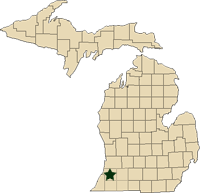
Last week’s weather began pleasant with highs near 80. Highs rose into the 90s before the weekend of September 3-4. Scattered showers were associated with a cold front that brought cooler weather Sunday. Soils are becoming dry. This week is forecast to have highs in the 70s with little chance of rain. Check the closest weather station at: enviroweather.msu.edu.
|
Southwest Michigan Growing Degree Day Totals |
|||
|
Location |
GDD 42 |
GDD 45 |
GDD 50 |
|
3555 |
3117 |
2432 |
|
|
3353 |
2929 |
2265 |
|
Tree fruit
No brown marmorated stink bugs have been found in the area. While stink bug damage has been found in apples and peaches, the brown marmorated is not the only stink bug. San Jose scale has been showing up on various fruit types.
Peach harvest continues with varieties picking much later this year than usual. Varieties being harvested include PF 24 C- cold hardy, PF 23, PF 19-007, PF 22-007, PF 24-007, Loring, and Redkist. Fruit with brown rot is evident in some varieties. Fruit size and quality is generally very good although the dry weather is holding back fruit sizing in sandy sites. Bacterial spot is a problem in orchards with susceptible varieties next to vegetable fields due to blowing sand earlier in the season. Trap catches of Oriental fruit moth continues to be high in some orchards we trap.
In cherries, cherry leaf spot symptoms are spotty with new waves of yellow leaves appearing in some orchards. Many trees have been completely defoliated
Plum harvest is finished. There are still later varieties to be harvested.
In apples, Gala, Macintosh and Honeycrisp harvest is underway and processing blocks are being harvested. We are about 5 days later than the predicted apple harvest dates.Trap catches for Oriental fruit moth declined this week. We are still trapping low numbers of codling moth. Flight of the summer generation of obliquebanded leafroller is underway and apple maggot flies are out.
In pears, Bartlett harvest is ending.
Small fruit
Spotted wing drosophila numbers are rising and should climb in blueberries and other small fruit as insecticide applications end after harvest. So far in Berrien County, this new pest has been found at six locations, in traps in or near blueberries, grapes and raspberries.
Grapes are coloring. Early table grape varieties are being harvested. Niagara harvest is forecast to begin on September 12 and Concord about 16 days later. With the hot weather we experienced, enough degree days have accumulated for a fourth generation of grape berry moth. The fourth generation of grape berry moth should be out within a few days and laying eggs. Infested clusters in the vineyards we scout ranged from 0 to 6 percent. Growers should be checking their vineyards to assess grape berry moth control and making decisions for additional treatments accordingly. Grape berry moth infestation should be kept to about 6 percent in vineyard interiors. Defoliation from downy mildew is increasing in commercial Niagara vineyards. Downy mildew has also been observed in Concord grapes this year, due to continued favorable conditions for this disease. Extensive periods of morning ground fog and dew allow the rapid spread of downy mildew, so preventative treatments should be continued. Phomopsis is showing up on berries at more locations as sugar levels increase in grape clusters.
Blueberry harvest is ending. Most growers have finished Elliotts, reporting low yields and poor berry size from later pickings. Overall most growers were disappointed by the poor yields in 2011. Spotted wing drosophila numbers have spiked upwards in blueberries and other small fruit as insecticide applications end after harvest and populations build in unharvested fruit. While trap catches have been low, it seems likely that there is a small and scattered population in wild and abandoned blueberries in southwest Michigan. Last year we saw a steady rise of this small vinegar fly in the fall and I expect to see the same this year. Unless you know that you have this pest, it makes little sense to spray for it unless you have unharvested fruit. Where you still have fruit to harvest maintain a tight insecticide schedule.
Now is the time to think about setting up the fields for next year. One need may be irrigation. Blueberry plants are just starting to set flower buds for next year. With all the rain this year most growers had lots of new growth and the potential for a heavy crop next year. Be sure to keep soils moist in September. If the soil dries out the plants will shut down reducing the number of flower buds set in September. Normally, the fall rains start in October and no irrigation should be necessary later. Early fall is not a good time to fertilize as we want the shoot tips to set flower buds not start new growth. Keep an eye out for diseases. There have been numerous reports of leaf rust but few confirmed sightings in Van Buren and Berrien counties. Indar is probably the best choice if you have blueberry rust. Be sure you have rust by examining the bottom of the leaves for the yellow fruit bodies of the fungus. A fall application of a protectant material such as Bravo or Sulfurix before the rainy season begins will provide a degree of protection to new growth and flower buds.
Fall is a good time to apply residual herbicides, see the article on fall weed control by Eric Hanson.
Strawberry fields are generally growing well and running, except where potato leafhoppers have stunted growth. Seascape and Albion are two ever-bearing varieties being harvested. Weed control has been problematic.
In brambles, blackberry, and fall raspberry harvest continues. Heavy morning dews can make gray mold a problem. Spider mites may also be an issue, especially in high tunnels. Growers should take time to assess injury levels and treat accordingly.
Southeast Michigan – Bob Tritten, Michigan State University Extension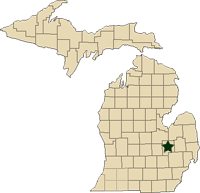
Weather
Our 2011 growing season is still running ahead of normal by close to 5 days when I compare degree day totals to 30-year averages across the region. In looking at apple maturity this week, I think that our season is now running about normal in terms in the beginning of harvest of our tree fruit varieties.
Many areas of east Michigan have not had significant rainfall over the last two weeks, and soils are running on the dry side again. While it appears that the rain that we had 2 to 4 weeks ago helped fruit size for many of our crops, we did not have enough rain to replenish soil moisture supplies. I hope that the situation will correct itself throughout the rest of the fall. While signs of drought stress on our fruit plantings are not nearly as apparent as they were a month ago, dry soils continue to have an impact on growth particularly in newly planted trees and small fruit crops.
|
East Michigan Growing Degree Day Totals for March 1 to September 5 , 2011 |
|||
|
Location |
GDD42 |
GDD45 |
GDD50 |
|
Commerce (Oakland) |
3445 |
3020 |
2351 |
|
Emmett (St Clair) |
3392 |
2970 |
2310 |
|
Flint (Genesee) |
3429 |
2998 |
2335 |
|
Lapeer (Lapeer) |
3418 |
2993 |
2331 |
|
Petersburg (Monroe) |
3625 |
3185 |
2494 |
|
Pigeon (Huron) |
3205 |
2792 |
2148 |
|
Romeo (Macomb) |
3495 |
3073 |
2411 |
Tree fruits
Apple size continues to march along quite nicely, particularly where supplemental moisture has been supplied throughout the season. Many apples are now approaching 3.25 inches in diameter.
Apple harvest is just starting for some early strains of Gala at a few farms across the region. There has been a great interest to begin McIntosh harvest as well. The McIntosh that I sampled yesterday are not ready yet. The growth of McIntosh fruit is starting to push some fruit off the limb; therefore fruit drop is beginning to be a concern on this variety. Yesterday I collected my first set of apple samples for the Apple Maturity Project for the 2011 apple harvest season. I will have results of that testing tonight and will have a complete Apple Maturity (harvest) Report available tomorrow (Wednesday, September 7).
Apple inset pressure continues to be on the decline across the region, with the exception of high codling moth trap catches in some non-pheromone disrupted blocks. I am also seeing some increased trap catch numbers of both oriental fruit moth and oblique banded leafroller. I also am not certain what these increased trap catches means for potential injury to fruit this fall, but it is something that I am watching closely. Codling moth injured fruit is quite common in many orchards across the region. While the percentage of fruit damage is low, the level of damage is much higher than growers are accustomed to finding at harvest.
Black rot infested apples continue to be seen in many apple blocks, especially in Honeycrisp and Gala. Sooty blotch and fly speck is being seen in more blocks of apples over the last few weeks.
Pear harvest is underway at most farms across the region for Bartlett. Where soil moisture has been adequate fruit size is excellent. Where soils have been dry, fruit size has been compromised.
Peach harvest continues and is very close to being wrapped up for the season. Varieties being harvested currently include final picking of Canadian Harmony, Glohaven, and some of the late PF series. Fruit size has improved greatly for late season peach varieties. I have had a number of growers report to me of seeing light amounts of brown rot showing up in these later peach varieties.
Sweet and tart cherry trees look rough at many farms across the region, with extensive leaf drop due to cherry leaf spot infections earlier in the season. In particular some young blocks are completely defoliated at this time. This is of concern to me because of the potential for winter injury this year.
Plums continue to color very well, with Stanley’s being very close to ready for harvest. I expect harvest to begin fairly quickly here in the next few days on Stanley plums. There has been a slight amount of fruit drop on some heavily loaded Stanley plum trees, but for the most part they are holding very well.
Small fruits
Strawberries continue to put on new runner growth in newly planted fields. I have had conversations with strawberry growers and visited numerous strawberry farms where renovated patches are much weedier this year than growers have ever experienced. In some cases where a tremendous amount of moisture came at the end of July, herbicide applications at renovation time have essentially washed through the soil profile and are no longer effective. Growers might consider an herbicide application fairly quickly to help maintain some level of weed control throughout the fall.
Raspberry harvest continues for fall red raspberries, we are now in the peak of production of many fall bearing varieties across the region. We have had a fairly good yield thus far on fall red raspberries, and consumer demand remains very strong. I have not seen any Japanese beetles in fall red raspberries over the last week. Fall blackberry harvest is fairly close to beginning at several farms.
Blueberry harvest is just about complete at most farms across the region. Many blueberry growers report a much lower yield this year than was anticipated. I am hearing many growers say that they had between 50 and 60 percent of a normal crop this year.
Grapes are coloring very well for Concord types, and the earlier season table grapes are now being harvested. Growers are anticipating Concord harvest to begin in 2 and half to 3 weeks or so. Downy mildew symptoms have been severe in many blocks of grapes over the past week, with a great deal of defoliation taking place. There is also signs of powdery mildew in many of these plantings as well; this also has contributed to early leaf drop in grapes.
Grand Rapids Area Tree Fruit - Amy Irish-Brown and Phil Schwallier, Michigan State University Extension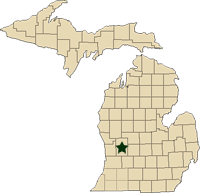
Weather and crop summary
Degree day accumulations indicate much of the Grand Rapids area is 7 to 11 days ahead of normal averages. Since most of this above normal accumulation happened in July, it has not made apple harvest dates ahead of normal. In fact, it is thought that the earlier published predicted apple harvest dates are 3 to 5 days too early. This needs to be taken into consideration for timing harvest management tasks such as Retain applications.
Peach and plum harvest is coming to an end in the Grand Rapids area. The second picking of Paula Reds is over. Gingergold harvest is over. Some early Mac harvest is just beginning. Growers are looking at the earlier Gala strains for harvest as some seem to be showing signs of moving faster in maturity that expected.
Tree fruit pests
Apple scab will again become a threat to fruit if the weather in September takes a turn for the wetter. Additional fungicides to protect fruits will be needed to prevent new lesions on clean fruit. Summer diseases are still a threat and growers should keep fungicides updated at least every 4 weeks and tighten up that schedule if needed based on rainfall.
Tree fruit insects
A new codling moth biofix was set for second generation on July 23. We will have accumulated 900 degree days base 50 by the end of the day, September 6. Trap numbers of adults have been mostly zeros across most traps in the area for the last 2 weeks. The degree day model indicates egg hatch for second generation is just about complete, so cover sprays should not be necessary to maintain any longer for this pest.
A few reports of adult apple maggot flies on yellow boards and red spheres have come in the last 10 days. Growers should be trapping for apple maggots in their individual blocks. This pest has not been a routine problem on the Ridge, but we are hearing of higher numbers than in recent years so it is something to pay attention to and trap for.
Obliquebanded leafroller adults seemed to have a peak flight last week with some very high numbers being reported in the area. I set a new regional biofix for this pest on August 15. There have been 563 degree days base 42 accumulated since then. This indicates that adult moths are most likely just past their peak flight for this generation. These adults will mate and lay eggs, which will hatch into the small larvae that will overwinter to become active again next spring.
Japanese beetles are finally gone for the year.
European red mites continue to be active. Bronzing in high population orchards is evident. At this time of year, the threshold for treatment is 15 mites per leaf. Be sure to check the pre-harvest interval (PHI) of products based on the variety you have.
Wooly apple aphids are present here and there. They often are noticed when you move into a block for harvest. There is no need to control them now – let the beneficials work on them this fall, and remember to scout for them in high pressure blocks in 2012.
Oriental fruit moth third generation egg hatch is well under way. We have accumulated 2700 degree days from the early season biofix back on May 12. Some are reporting high numbers of adults in traps over the last 2 weeks. Numbers are declining so we’ve past the peak flight for this generation.
Grand Rapids Area Small Fruit– Carlos García-Salazar, Michigan State University Extension 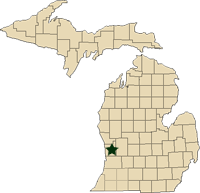
Blueberry harvest is coming to an end very soon
Weather conditions during the past two weeks were hot and humid and, for most of the past few days, the average minimum temperature was 58°F and the maximum around 82°F. These temperatures accelerated fruit ripeness in blueberry fields that were being harvested. Since the demand for fresh blueberries is still high, some of the last fields harvested are handpicked for the fresh market. However, most of the remaining fields are machine harvested. Rains in the area have been occasional, less than a half inch, which has favored the harvest of remaining fields.
One reason for the increase in the use of mechanical harvesters is the high cost of labor. Because of the small amount of berries remaining on plants already harvested two to three times, it is taking pickers more time to harvest a pound of blueberries than under good crop conditions. Because of this, growers have to increase the amount paid per pound of berries harvested so pickers can make the minimum wage required by law.
Another reason that contributed to a decrease in the amount of handpicked blueberries for fresh pack was the significant scrutiny of the Labor Department and in some cases pending litigations related to the past year’s audits. As a result of these, fewer pickers were hired this season in comparison with 2010. This trend is very likely to continue in the future as growers learn how to use more equipment to substitute large numbers of people during the harvesting and sorting of blueberries.
Regarding problems in blueberries, we are seeing an increase in the number of spotted wing Drosophila flies trapped across west Michigan. The increase is significant in raspberry and organic blueberry fields. For raspberries that still are in production and are harvested, the recommendation is to continue monitoring and apply the recommended insecticide to prevent the establishment of a large population of flies for the next season.
In blueberries, the situation is different. This crop season has been a long season for controlling Japanese beetles. There were multiple applications of insecticides against this insect. An indirect result of these applications may have been the control of spotted wing Drosophila that may have been present. It is recommended not to relax the surveillance and control of spotted wing Drosophila if berries are still being harvested.
Northwest Michigan – Nikki Rothwell, Duke Elsner, Erin Lizotte, Michigan State University Extension 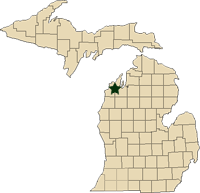
Weather report
Temperatures have gone from summer to fall pretty quickly here in the north. Our daytime temperatures only reached into the mid-50’s yesterday, and it was the coldest day ever reported on September 5. Temperatures are forecasted to be more typical in the coming days. We did receive much needed rain over the weekend, and the NWMHRS weather station recorded 0.35” on September 3 and 0.15” on September 4.
Crop report
Peach harvest continues but is winding down. Peaches were smaller than in past years, likely due to the lack of rainfall this season. Growers are just starting to harvest apples, and Paula Reds and other early varieties are coming off now. I anticipate GingerGold harvest to begin soon across the region. Apple quality is looking good at this time.
Pest report
In cherries, plum curculio continues to be caught in pyramid traps, particularly in blocks with fruit still hanging and those adjacent to woodlots. Obliquebanded leafroller (OBLR) adult emergence continues at significant numbers (19 per trap), and this season, the second generation flight has been surprisingly protracted. Many area growers have transitioned away from organophosphates which have become ineffective OBLR materials due to resistance. OBLR history in apple production tells us it may take one or two seasons before populations can be brought under control with the new lepidopteron materials.
Lesser and greater peachtree borer as well as American plum borer continue to emerge at very low levels (less than 1 per trap on average). Cherry fruit fly continues to be caught in high pressure sites, but at very low numbers. Cherry leaf spot infection and defoliation continues around the region, retaining leaves through September helps minimize the negative effects of early defoliation. Powdery mildew is present, particularly on vigorously growing shoots.
Codling moth emergence has slowed but continues in apples. We often do not see a clear distinction between first and second generation in the north, and 2011 is no exception with adult moths continuing to be trapped each week since the end of May. Codling moth resistance to the OP compounds has been detected in Michigan orchards throughout the state, the levels of resistance detected were high enough in those orchards that sole reliance on OP's for codling moth control is not likely to provide sufficient control. In addition, populations resistant to OP compounds may also be resistant to pyrethroids. There are a number of new lepidopteron materials available (see the MSUE’s Fruit Management Guide #E154). Always read and follow all pesticide labels carefully. Obliquebanded leafroller numbers were back up with an average of 4 per trap. We are seeing some fruit scab on highly susceptible varieties, specifically Macintosh. Powdery mildew is minimal.
In winegrapes, brix level, flavor and color was developing at a good pace until the cooler and wet weather arrived on September 2. Hopefully the much needed moisture will be followed by a bit warmer and sunnier weather over the next few weeks. Bird netting has been deployed at many sites.
Powdery mildew has become a bit more easy to find, appearing on leaves and berries in several locations. Heavy infections have been seen in some vineyards that did not have good canopy management earlier in the season. Recent rains may promote the development of cluster rots, especially if there has been prior damage to the fruit from grape berry moth larvae or wasps.



 Print
Print Email
Email



